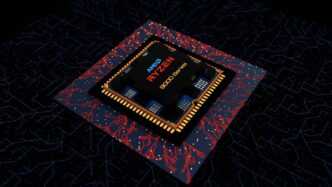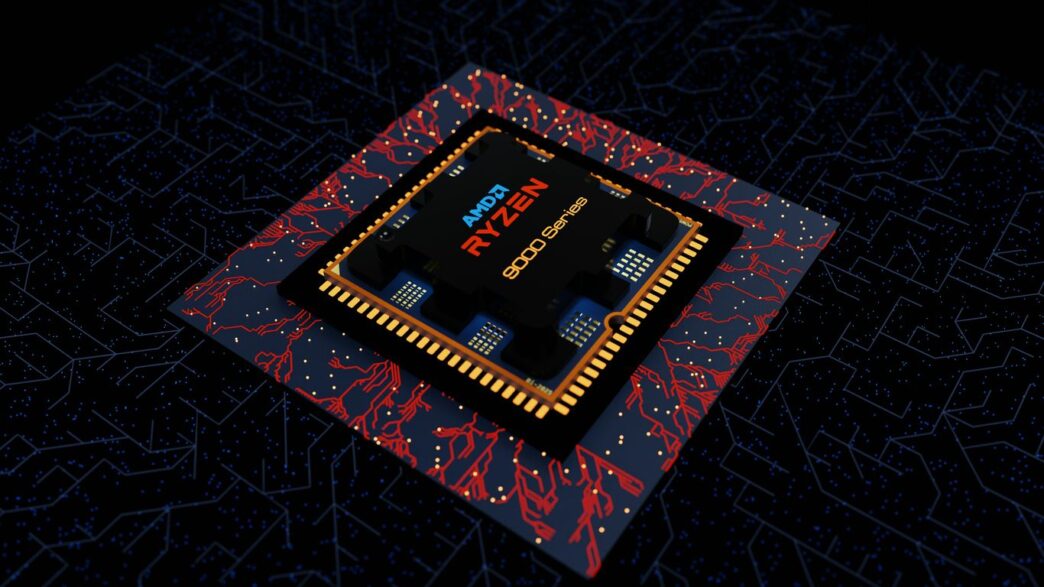This year’s semicon trade show was a whirlwind of new ideas and future plans. It felt like everyone in the semiconductor world was there, sharing what’s next. From big company leaders talking about where the industry is headed to students like me trying to figure out our place, the energy was high. It wasn’t just about the tech itself, but also about the people and how we can all work together to build what comes next. I came away with a lot to think about, especially concerning my own career path.
Key Takeaways
- The semiconductor industry really needs people who can think about different subjects, not just one narrow area. Your background in, say, materials science and data science can be a big help.
- Being good with people is just as important as knowing the technical stuff. Being able to talk to others and ask good questions helps build connections that last.
- Students aren’t just watching from the sidelines; they have something to offer. Your fresh ideas and different way of looking at things are valuable.
- There isn’t just one way to get a job in semiconductors. Lots of different roles exist, and you don’t need to have your whole life planned out from the start.
- Just showing up and putting yourself out there makes a difference. Going to events like this semicon trade show and talking to people is how you find opportunities.
Navigating the Evolving Semiconductor Landscape

The semiconductor industry is always on the move, and this year’s show really hammered that home. It feels like every time you turn around, there’s a new policy, a new economic trend, or a new global partnership shaking things up. We heard a lot about how geopolitical shifts are playing a bigger role than ever. Countries are looking at their own chip needs and trying to build up domestic capabilities, which is a huge change from how things used to be. This means more focus on national security and making sure supply chains aren’t too dependent on any single region.
Keynote Insights on Industry Trajectory
Speakers at the keynotes painted a picture of an industry in constant flux. There’s a big push for "winning" the AI race, but the strategies for getting there are really different now. Some policies are making it tougher for foreign companies to invest here, with tariffs going up quite a bit. It’s a complex puzzle, and fixing one piece often means you have to adjust others. For example, as we get better at making chiplets, we also need new ways to test them.
Market Dynamics and Economic Shifts
The economic side of things is pretty interesting too. The numbers presented showed that changing trade rules are making the U.S. a bit harder for semiconductor investment. While tariffs have brought in extra money, companies are feeling the pinch, and some are slowing down their plans to invest here. It’s a balancing act between national goals and keeping the global market healthy. We’re seeing a shift where companies are thinking more about bringing key manufacturing steps closer to home, partly because of national security concerns.
Geopolitical Influences on Global Trade
Global politics is definitely a major player now. Leaders talked about how international policies and partnerships are shaping decisions. There’s a constant assessment of how to balance what each country needs with the benefits of working together globally. This push for regionalization means rethinking supply chains to be more resilient and less prone to disruption. It’s not just about making chips; it’s about where and how they’re made, and who controls those processes.
Innovation and Technical Advancements on Display
The trade show floor was a vibrant showcase of what’s next in microelectronics. It wasn’t just about shiny new gadgets; it was about the deep engineering and creative thinking that makes them possible. You could really feel the energy around the latest developments.
Cutting-Edge Chip Design and Packaging
This was a big focus, and for good reason. We saw a lot of discussion around advanced packaging techniques, like 2.5D and 3D stacking. The idea is to pack more power and functionality into smaller spaces. Chiplet integration, where smaller, specialized chips are combined, is also gaining serious traction. It’s a smart way to build complex processors without having to design everything from scratch. This approach is key to bolstering Europe’s semiconductor resilience.
Here’s a look at some of the packaging trends:
- Heterogeneous Integration: Combining different types of chips (logic, memory, I/O) into a single package.
- Chiplet Architectures: Breaking down large SoCs into smaller, reusable chiplets.
- Advanced Substrates: New materials and designs for interposers and substrates that improve performance and thermal management.
Emerging Technologies in Microelectronics
Beyond packaging, there were fascinating glimpses into what’s on the horizon. Flexible hybrid electronics, for instance, are opening doors for new applications in wearables and smart devices. MEMS (Micro-Electro-Mechanical Systems) and advanced imaging sensors are also becoming more sophisticated, finding their way into everything from medical devices to automotive systems. The progress in these areas is pretty remarkable.
The Role of Artificial Intelligence Integration
AI wasn’t just a topic of discussion; it was actively being integrated into the technology itself. We saw AI being used to optimize chip design processes, improve manufacturing yields, and even enhance the performance of the chips once they’re in operation. The synergy between AI and semiconductor development is undeniable, driving innovation at an unprecedented pace. It’s clear that AI is no longer just a software concept; it’s becoming a core component of hardware design and functionality.
Building the Future Workforce
The semiconductor industry is growing fast, and that means it needs more people. It’s not just about having enough hands; it’s about having the right skills. The trade show really highlighted how companies are thinking about this.
Addressing Skilled Labor Shortages
This is a big one. Everyone seems to agree there aren’t enough trained folks to go around. Companies are trying different things to fix this. Some are working with schools to get students interested early on. Others are creating their own training programs to teach people the specific skills they need. It’s clear that investing in people is seen as just as important as investing in new machines. The goal is to build a steady stream of talent for the future.
Integrating Educational and Training Systems
It’s not enough to just talk about the problem; you have to do something about it. Many companies are partnering with universities and technical colleges. They’re helping shape curriculum so what students learn in class actually matches what’s needed on the factory floor or in the design lab. Think about programs that give students hands-on experience or apprenticeships. It’s about making the jump from learning to working much smoother. This kind of collaboration helps bridge the gap between what academia teaches and what industry demands. The National Network for Microelectronics Education (NNME) is one example of these efforts.
Career Pathways in the Semiconductor Sector
What’s cool is that there isn’t just one way to get into this field. You don’t have to be a hardcore engineer from day one. People talked about roles in areas like supply chain management, data analysis, and even sales, all needing people with semiconductor knowledge. It’s about recognizing that different backgrounds can bring fresh ideas. The industry is looking for people who can connect different areas of knowledge. So, whether you’re into materials science, chemistry, or computer science, there’s likely a place for you. It’s a reminder that showing up and being open to different opportunities really matters.
The Power of Connection at the Semicon Trade Show
Networking for Career Growth
Walking onto the expo floor at SEMICON West felt like stepping into a different world. It wasn’t just about seeing the latest tech, though there was plenty of that. What really struck me was the sheer number of people, all there with a shared purpose. You had engineers, researchers, company leaders, and students like me, all moving with this kind of focused energy. It’s easy to feel a bit lost at big industry events, especially as a student, but SEMICON West felt different. It was busy and technical, sure, but also really welcoming. People seemed genuinely interested in what students had to say, and it felt like there was a real effort to make space for new talent.
Bridging Academia and Industry
I found that being a student actually worked in my favor. People were more willing to share advice and talk honestly about their own career journeys. It gave me the confidence to be open about my own path, which wasn’t exactly a straight line. Asking questions was key. Instead of trying to sound like I knew everything, I focused on asking things like, "How does your team work with materials engineers in your design process?" or "What kind of roles do you typically hire grad students for?" These kinds of questions often led to really interesting conversations that went deeper than just surface-level chat. I made sure to have a simple student card ready with my contact info after talking with people.
The Value of Interdisciplinary Thinkers
It was pretty cool to see how my own varied studies – things like materials science and data science – actually fit into what companies are doing. This industry is changing so fast, and it seems like they really need people who can think across different areas. It’s not just about knowing one thing really well. The ability to communicate clearly and connect with people authentically made a big difference in building relationships. I left with a small but real network of engineers and hiring managers, all because I showed up, asked questions, and stayed curious. It really hammered home that showing up and putting yourself out there is half the battle.
Sustainability and Supply Chain Strategies

Driving Progress Through Environmental Stewardship
It’s pretty clear that the semiconductor industry is facing some serious environmental questions. We heard a lot about this at the show, and honestly, it feels like we’re at a bit of a crossroads. One big topic was how to deal with things like PFAS chemicals. Apparently, there are still areas where we just don’t have a good answer for them yet. Applied Materials’ Elena Kockerovsky really stressed that we need to keep our eyes on climate goals, not get too bogged down by all the policy changes and new rules. It seems like a lot of the current thinking is to use AI to get better climate data and make smarter moves. Micron also pointed out that swapping out old equipment for more eco-friendly gear and making products that use less energy is a good path forward. But then you have the whole AI energy use thing – it’s a bit of a head-scratcher, right? Using AI to fix the environmental problems AI causes. It’s not simple, especially when you’re talking about placing atoms just right for power efficiency. We’re looking at trillions of spots, and one wrong move can make a chip a power hog. The clock is ticking on climate change, and while there’s progress, there are still big hurdles.
Rethinking Supply Chain Resilience
This was a huge theme. Everyone’s talking about how the supply chain is all over the place, and that’s a national security issue. The idea is to bring key manufacturing steps closer to home, or at least within friendlier borders. But it’s complicated. For example, setting up assembly facilities in the U.S. for things like OSAT (outsourced semiconductor assembly and test) is tough. Asia has the cost advantage and decades of experience. If we want that here, companies might have to take a hit on profits. Plus, tariffs have really shaken things up. U.S. tariff revenue shot up, which sounds good for the economy, but companies are paying more, and the uncertainty is making some businesses hesitant to invest here. It’s a balancing act, for sure. We also heard about how complex regulations and high facility costs make investing in the U.S. a challenge for companies from places like Taiwan. There’s some hope with legislation like the U.S.-Taiwan Expedited Double Tax-Relief Act, but it’s still working its way through.
Collaboration Across the Value Chain
No one seems to think they can solve these big issues alone. Collaboration was mentioned by pretty much everyone. From the companies designing chips to the ones making the equipment and the final suppliers, every step matters. If something goes wrong early on, it can cause big problems down the line. PDF Solutions talked about their secure system for sharing data, which could help with collaboration, especially when intellectual property is a concern. SEMI also has its own platform to help connect different parts of the industry. It’s clear that working together is the only way to tackle the massive demands of AI, workforce training, and climate goals. It’s a complex puzzle, and everyone needs to be on the same page.
Key Takeaways for Aspiring Professionals
So, you’re thinking about jumping into the semiconductor world? That’s awesome. After spending some time at the recent trade show, it’s clear this industry is buzzing with opportunity, but it’s not just about knowing the tech stuff.
The Importance of People Skills
Look, knowing your way around a circuit board is important, no doubt. But what really seemed to make connections happen were the simple things: asking good questions, listening, and just being able to chat with people. I saw firsthand how hallway conversations and quick chats at booths led to some of the most interesting discussions. It’s about building relationships, and that takes more than just technical smarts. Being able to communicate clearly and connect with others is a superpower in this field.
Students as Contributors and Collaborators
Don’t think of yourself as just a student watching from the sidelines. The industry is actively looking for fresh ideas and new ways of thinking. Your unique perspective, whether from your studies or just your curiosity, is actually a big plus. People at the show were happy to share advice and insights, seeing students not just as visitors, but as potential future team members. It felt like everyone was open to collaboration.
Embracing Diverse Career Journeys
Forget the idea that there’s only one way to get into semiconductors. I met engineers, people in management, folks focused on sustainability – everyone had a different story about how they got here. Your path doesn’t have to be a straight line. It’s okay not to have everything figured out from day one. The key is to show up, be curious, and start making those connections. The industry needs all sorts of thinkers and doers, so find where you fit and go for it.
Wrapping It Up
So, after spending time at the show, it’s clear the semiconductor world is moving fast. There’s a lot of talk about new tech, sure, but also a real focus on people – finding them, training them, and making sure everyone feels welcome. It’s not just about the fancy machines; it’s about building a team that can handle whatever comes next. Whether you’re just starting out or you’ve been in the industry for years, it seems like there’s a place for different kinds of thinkers and skills. The main thing is to stay curious, keep learning, and don’t be afraid to connect with others. The future looks pretty interesting, and it’s definitely not set in stone.
Frequently Asked Questions
What is SEMICON West and why is it important?
SEMICON West is a big event where people from all over the world who make and work with computer chips get together. It’s like a huge show and tell for the latest technology in making these tiny parts that power our phones, computers, and so much more. It’s important because it helps everyone share ideas, see what’s new, and figure out how to make better and faster chips for the future.
What kind of jobs are available in the semiconductor industry?
There are tons of different jobs! You can be someone who designs the chips, someone who builds them in factories, someone who tests them, or even someone who helps sell them. There are also jobs in research, managing projects, and making sure the factories are running smoothly. It’s a really diverse field with many different paths to take.
Is it hard to get a job in the semiconductor industry?
It can be competitive, but there are many opportunities. The industry is growing, and they need lots of smart people. Having good skills in science, math, and technology helps a lot. Also, being good at talking to people and working in teams is super important, just as much as knowing the technical stuff.
Do I need to be a super expert in engineering to work in this field?
Not necessarily! While engineering is key, the industry also needs people with skills in areas like data science, chemistry, business, and even communication. They really value people who can think about problems from different angles and connect different ideas. So, even if your main subject isn’t pure engineering, your unique knowledge could be a big plus.
What’s the deal with “supply chains” in this industry?
Think of a supply chain like a long line of steps needed to make and deliver something. For computer chips, it involves getting raw materials, making the chips, putting them into devices, and then getting those devices to you. Lately, people are thinking hard about how to make this line stronger and more reliable, so we always have the parts we need, even if something unexpected happens.
How can students get involved or learn more about this industry?
Students can attend events like SEMICON West, join clubs related to science and tech, talk to people working in the field, and look for internships. Many companies offer programs specifically for students to learn and gain experience. Showing curiosity and reaching out is a great way to start!














